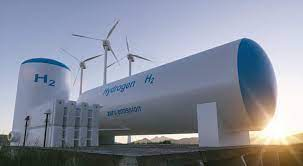CURRENT AFFAIRS
Get the most updated and recent current affair content on Padhaikaro.com
National Hydrogen Mission policy: Part I
- Vaid's ICS, Lucknow
- 21, Feb 2022

Why in News?
- Recently, the Ministry of Power notified the first part of the National Hydrogen Mission policy on green hydrogen and green ammonia
Major Highlights of the policy
- Green Hydrogen / Ammonia manufacturers may purchase renewable power from the power exchange or set up renewable energy capacity themselves or through any other developer, anywhere.
- Open access will be granted within 15 days of receipt of the application.
- The Green Hydrogen / Ammonia manufacturer can bank his unconsumed renewable power, for up to 30 days, with the distribution company and take it back when required.
- Distribution licensees can also procure and supply Renewable Energy to the manufacturers of Green Hydrogen / Green Ammonia in their States at concessional prices which will only include the cost of procurement, wheeling charges and a small margin as determined by the State Commission.
- Waiver of inter-state transmission charges for a period of 25 years will be allowed to the manufacturers of Green Hydrogen and Green Ammonia for the projects commissioned before 30th June 2025.
- The manufacturers of Green Hydrogen / Ammonia and the renewable energy plant shall be given connectivity to the grid on a priority basis to avoid any procedural delays.
- The benefit of Renewable Purchase Obligation (RPO) will be granted incentive to the hydrogen/Ammonia manufacturer and the Distribution licensee for consumption of renewable power.
- Manufacturers of Green Hydrogen / Green Ammonia shall be allowed to set up bunkers near Ports for storage of Green Ammonia for export/use by shipping. The land for the storage for this purpose shall be provided by the respective Port Authorities at applicable charges.
Benefits linked to it
- Hydrogen and Ammonia are envisaged to be the future fuels to replace fossil fuels.
- Production of these fuels by using power from renewable energy termed green hydrogen and green ammonia is one of the major requirements towards environmentally sustainable energy security of the nation.
- The government of India is taking various measures to facilitate the transition from fossil fuel/fossil fuel-based feedstocks to green hydrogen / green ammonia.
- The implementation of this Policy will provide clean fuel to the common people of the country.
- This will reduce dependence on fossil fuels and also reduce crude oil imports.
- The policy promotes Renewable Energy (RE) generation as RE will be the basic ingredient in making green hydrogen.
- This in turn will help in meeting the international commitments for clean energy.
About National Hydrogen Mission
- It was proposed in the Union Budget 2021.
- The government’s aim is to make India a global hub for the production and export of green hydrogen.
- Green hydrogen energy is vital for India to meet its Nationally Determined Contributions.
It is a clean-burning molecule, which can decarbonise a range of sectors including iron and steel, chemicals, and transportation.
· The initiative has the potential of transforming transportation.
· This will help in meeting the target of production of 5 million tonnes of Green hydrogen by 2030 and the related development of renewable energy capacity.
Types of Hydrogen Fuel
Grey Hydrogen:
- Manufactured using Natural Gas without carbon sequestration
Brown Hydrogen:
- Manufactured using Coal without carbon sequestration.
Blue Hydrogen:
- Manufactured using Natural Gas with carbon sequestration.
Green Hydrogen:
- Manufactured using Renewable Energy.
Facts for Prelims :
India’s first water taxi service
In News
- India’s first water taxi service was inaugurated in Maharashtra.
Key Facts
- The ?8.37-crore project has shared expenditures from the State and Centre and will currently operate in three routes.
- The three routes include
- Belapur to Ferry Wharf (the domestic cruise terminal)
- Belapur to Elephanta Caves
- Belapur to JNPT
- It will provide faster connectivity between Mumbai and Navi Mumbai.